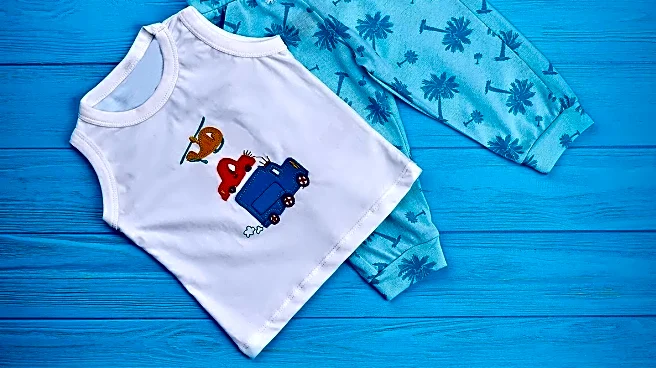What's Happening?
A design flaw in a pair of kids' pants sold at Target has gone viral, sparking backlash from consumers. The pants, part of a collaboration with sportswear brand Champion, feature a center pleat in the crotch area that stretches out in a way that resembles a camel toe or worse, according to Dr. Marcy Crouch, a women's health specialist who highlighted the issue on social media. The viral video has led to widespread criticism, with many customers expressing dissatisfaction and returning the product. The design flaw has raised questions about the consideration of female comfort in clothing design, a common grievance among women who often find everyday clothes to be poorly constructed or awkwardly designed.
Why It's Important?
The incident underscores ongoing concerns about the lack of attention to women's comfort and needs in clothing design. It highlights a broader issue within the fashion industry where women's clothing often lacks practical features such as pockets and is designed without adequate consideration for female bodies. This backlash could prompt retailers and designers to reevaluate their approach to product development, potentially leading to more inclusive and thoughtful designs. The viral nature of the complaint also demonstrates the power of social media in influencing consumer perceptions and driving change in corporate practices.
What's Next?
Target and Champion may need to address the design flaw publicly and consider redesigning the product to meet consumer expectations. The backlash could lead to increased scrutiny of other products and collaborations, prompting companies to prioritize consumer feedback in their design processes. Additionally, this incident may encourage other brands to reassess their approach to women's clothing design, potentially leading to industry-wide changes that better accommodate female comfort and functionality.
Beyond the Headlines
The viral backlash against Target's pants design highlights deeper cultural issues regarding gender and consumer expectations. It reflects a growing demand for inclusivity and functionality in women's fashion, challenging traditional norms that often prioritize aesthetics over practicality. This incident could contribute to a shift in the fashion industry towards more gender-sensitive design practices, fostering a culture of inclusivity and respect for diverse consumer needs.











